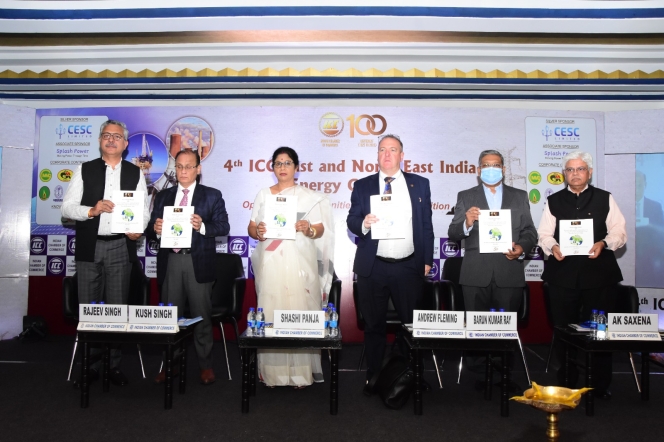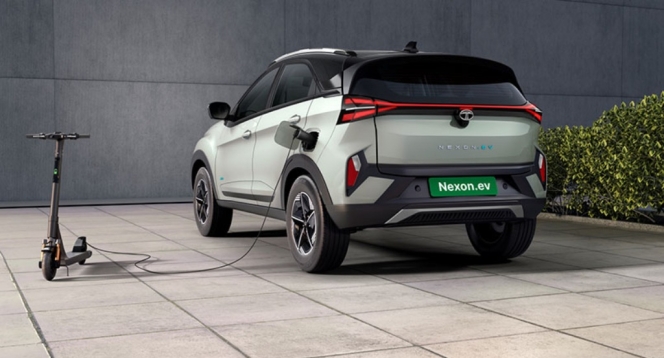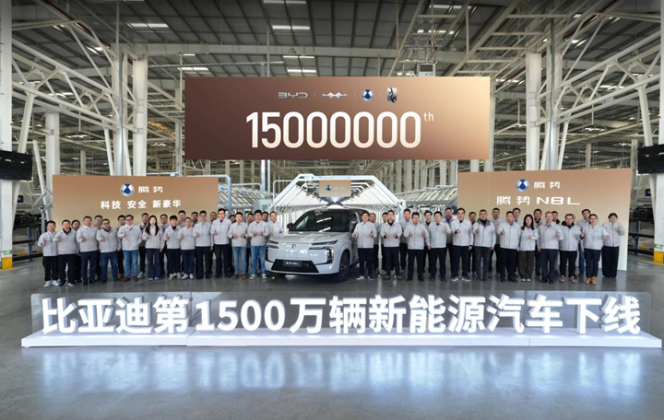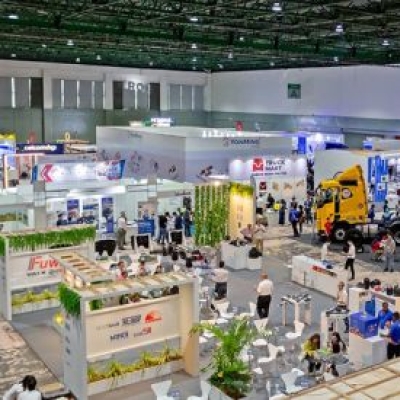Electric Mobility Needs More Than E-Buses: Kolkata Conclave
- By Gaurav Nandi
- May 23, 2025

India’s electric mobility transition is entering a decisive phase with public transportation emerging as the flagship for decarbonisation. At the 4th East and Northeast Energy Conclave held in Kolkata, A.K. Saxena, Senior Director at The Energy and Resources Institute (TERI), laid out an ambitious yet structured roadmap for how electric vehicles—particularly electric buses—can catalyse a cleaner, more inclusive transport future for India’s eastern and northeastern regions.
The event, organised by the Indian Chamber of Commerce, brought together policymakers, energy sector leaders and infrastructure experts to deliberate on regional energy transition strategies. Saxena’s keynote address stood out for its clarity on India’s electric mobility outlook, emphasising that public transport electrification must lead the charge.
Data-driven rollout in Kolkata
TERI’s work with the West Bengal Transport Corporation served as a case in point. The state aims to deploy 1,200 electric buses in Kolkata and Saxena revealed how technology and granular data are at the heart of this transformation. “We carried out a comprehensive traffic survey using GIS mapping and drone analytics to understand routes, congestion points and energy demand,” Saxena said. The insights helped identify optimal locations for EV charging infrastructure across the city.
The approach reflects a broader shift in India’s energy planning—from top-down mandates to data-driven micro-planning. Saxena emphasised that charging infrastructure is not just about installation but about siting, access, demand forecasting and grid-readiness. “The efficiency of public EV fleets hinges on planning that is grounded in real-world usage patterns,” he noted.
National push
In tandem with regional projects, the event also marked the launch of a new EV web portal and a short film on decarbonising public transport, both developed by TERI. These tools aim to enhance public awareness, empower local governments and standardise best practices.
Saxena pointed to TERI’s development of the e-Amrit portal for NITI Aayog—a national dashboard for EV adoption—as another example of institutional capacity-building in the e-mobility space. The platform offers guidance on EV incentives, vehicle types, charging options and ecosystem partners. “Digital platforms like e-Amrit can help streamline decision-making for city planners, fleet operators and even individual consumers,” Saxena added.
Broader energy transition
But Saxena was clear that electric mobility cannot be addressed in isolation, it must be integrated into a larger energy transition framework. He pointed out that e-mobility needs to be powered by clean, renewable energy and not simply displace tailpipe emissions with upstream fossil fuel usage.
“India must ensure that new incremental energy demand from EVs is met through renewables plus storage, not coal,” he said. TERI’s own roadmap recommends phasing out inefficient coal plants and meeting new demand growth through clean sources, particularly solar, wind and hydro.
Battery storage and pumped hydro have been prioritised as key enablers, especially for regions with variable renewables and peak demand mismatches. Saxena cited examples such as the Purulia and Turga pumped storage plants in West Bengal and Aparindavati in Odisha as vital to integrating e-mobility sustainably.
Coordinated ecosystem
One of Saxena’s boldest proposals was the formation of an East and Northeast Energy Transition Council. This cross-state platform would allow for better coordination between utilities, transport agencies and regulators. He argued that states like Odisha, Bihar, Assam and West Bengal can benefit from collaborative planning, especially on issues like charging infrastructure interoperability, storage strategy and renewable energy synergies.
He also floated the idea of setting up solar parks and EV charging corridors specifically tailored for intercity public transport routes. “Kolkata to Bhubaneswar or Guwahati to Shillong could become future-ready with fast-charging lanes,” Saxena said.
On the urban distribution front, Saxena advocated for the creation of distribution system operators (DSOs), specialised agencies tasked with managing decentralised energy flows including bi-directional EV charging, rooftop solar integration and grid balancing. “With vehicle-to-grid technologies on the horizon, the distribution system can no longer be passive,” he asserted.
Inclusive transition
Saxena closed his remarks with a reminder that India’s energy transition must be socially just and inclusive. Electrification of transport must not leave behind regions dependent on fossil fuels or traditional automotive sectors.
“Coal mining communities and internal combustion engine industries must be given retraining opportunities, livelihood alternatives and transition finance,” he said. Public transport electrification, he argued, presents an opportunity not only to cut emissions but to create green jobs, especially in battery servicing, EV manufacturing and smart infrastructure installation.
He acknowledged that the economics of EVs, especially in public fleets, may not yet be universally favourable. “But if we keep waiting for perfect conditions, the transition will remain academic,” Saxena said. “At some point, bold decisions have to be made.”
As India eyes near-universal e-mobility by 2040, Saxena’s remarks offered a realistic yet optimistic roadmap. The push to decarbonise public transport backed by smart tools, local data and clean energy is not just about vehicles. It is about shaping cities that are cleaner, healthier and more equitable for the future.
And in the alleys and arteries of Kolkata, India’s next mobility revolution may already be taking shape.
Chartered Speed Deploys Electric Buses For DCM Shriram Staff Transport
- By MT Bureau
- December 24, 2025

Chartered Speed has deployed 11 electric buses for staff transportation for DCM Shriram at Jhagadia GIDC, Bharuch. The service was inaugurated by Sanyam Gandhi, Whole-time Director at Chartered Speed and Aditya Shriram, Deputy Managing Director at DCM Shriram.
The deployment is part of an effort to shift employee mobility towards electrification. Chartered Speed operates a fleet of over 2,000 buses across six states, serving 350,000 passengers daily.
The electric buses are equipped with several technologies for fleet management and passenger safety. It comes with real-time GPS tracking and onboard Driver Monitoring Systems (DMS). CCTV cameras, fire protection systems and first-aid kits are installed in every vehicle.
The company currently provides school and staff transportation services to various clients, including GHCL Limited and Apple Global School.
Sanyam Gandhi, Whole-time Director, Chartered Speed, said, “With the recent deployment of electric buses, we are strengthening our commitment to reducing the carbon footprint of our operations and supporting the transition to greener transportation solutions. Our vision is of building a large, clean energy-powered fleet that aligns with global trends towards electrification in public transport. We remain focused on integrating technology in our services not only enhances operational efficiency but also fosters a culture of safety that we believe is essential for the future of transportation.”
- Tata Motors
- TATA.ev
- Nexon.ev
- Tiago.ev
- Curvv.ev
- Harrier.ev
- XPRES-T EV
- Shailesh Chandra
- Sierra.ev
- Punch.ev
- Avinya
- Agratas
Tata Motors Surpasses 250,000 EV Sales In India
- By MT Bureau
- December 23, 2025

Tata Motors, one of the leading passenger vehicle manufacturers in the country, has attained a new milestone in the Indian electric vehicle (EV) market, with cumulative sales of its TATA.ev range exceeding 250,000 units.
Since the launch of the Nexon.ev in 2020, the company has secured a 66 percent market share of all electric passenger vehicles sold in India to date. The Nexon.ev has become the first electric model in the country to surpass 100,000 cumulative sales.
At present, the company’s green vehicle offering includes the Tiago.ev, Punch.ev, Nexon.ev, Curvv.ev and Harrier.ev for personal use, alongside the XPRES-T EV for fleet operations.
To support its EV customers, Tata Motors has established an ecosystem, which includes access to over 200,000 charging points, including home, community and public chargers. A digital platform providing coverage for over 20,000 public chargers. Around 100 mega charging hubs operational across key corridors, offering speeds of more than 120kW. Approximately 1,500 dedicated EV service bays nationwide, staffed by over 5,000 technicians.
The automaker stated that every TATA.ev vehicle is manufactured with more than 50 percent local content. In collaboration with other Tata Group companies, the firm has localised the production of battery packs and battery management systems. The supply chain also includes domestic production of power electronics, wiring harnesses and thermal management systems.
Going forward, Tata Motors has outlined a robust growth strategy through to 2030:
- Upcoming Launches: The Sierra.ev and a new Punch.ev are scheduled for release in CY26, followed by the Avinya luxury range at the end of 2026.
- Portfolio Growth: Five new nameplates are planned by FY2030.
- Infrastructure Targets: The company aims for 400,000 charge points by CY2027 and 1 million by 2030.
- Battery Sourcing: Future models will use battery cells produced at the Agratas gigafactory in Sanand.
Shailesh Chandra, MD & CEO, Tata Motors Passenger Vehicles, said, “Crossing 250,000 EV sales reflects how electric mobility is fast becoming part of everyday Indian life. Our customers are driving more, travelling farther, and increasingly trusting EVs as their only cars. Our EV journey which began in 2018, was never about leading alone but about building the ecosystem to enable India’s transition to clean mobility. This progress is the outcome of the government’s forward-thinking policies, the steadfast support of our supplier partners and charging infrastructure providers and above all, the trust and enthusiasm of TATA.ev customers. As EV adoption accelerates, our commitment remains clear: to mainstream electric mobility by making it accessible across segments, strengthening the ecosystem, and investing in India-first technology and localization. This is how we will continue to lead India’s growing EV market.”
The company also intends to focus on the circular economy by reusing batteries for energy storage and providing battery health checks for second-hand owners.
Forsee Power To Supply ZEN LFP Battery Systems To Mexico's MegaFlux
- By MT Bureau
- December 22, 2025

French-headquartered battery systems manufacturer Forsee Power has announced that MegaFlux, a Mexico-based powertrain integrator, has selected its ZEN LFP battery system for its heavy vehicle electric powertrains.
MegaFlux develops electric powertrains for trucks and buses, including retrofit solutions that convert diesel vehicles to electric. The company also provides charging infrastructure and energy management services.
The ZEN LFP product line uses lithium-ion LFP chemistry and is designed for buses, trucks and off-highway vehicles. The batteries are available in 36 kWh and 55 kWh formats, allowing for various voltage and energy combinations. The LFP battery has an energy density of 240 Wh/L. Being a modular system, upto to two modules can be stacked to optimise vehicle space. The battery has 6,000 charging lifecycle and is ISO 26262 ASIL-C and industry standards including R100-3 and R10.6 certified.
The use of LFP (Lithium Iron Phosphate) chemistry is intended to provide a lower Total Cost of Ownership (TCO) for operators due to its thermal stability and cycle life, factors that are relevant to the operating conditions in markets such as Mexico.
MegaFlux will integrate the ZEN LFP batteries into powertrains sold to original equipment manufacturers (OEMs) and into its vehicle conversion projects.
BYD Rolls Out 15 Millionth New Energy Vehicle As Global EV Sales Rise
- By MT Bureau
- December 19, 2025

Chinese automotive major BYD has celebrated the production of its 15 millionth new energy vehicle (NEV) at its Jinan Factory. The milestone vehicle is a Denza N8L, which also represents the 15,000th unit of this six-seat SUV model.
The company reported sales of 4.182 million units from January to November 2025, a YoY growth of 11.3 percent. Global markets contributed to this performance, with overseas sales reaching 917,000 units, surpassing the total volume recorded in 2024. BYD now operates in more than 119 countries and regions.
Technological innovation continues to drive the company's operations. In the first three quarters of 2025, R&D expenditure rose to CNY 43.75 billion, a 31 percent increase compared to the previous year. Total cumulative investment in research and development has now exceeded CNY 220 billion.
The Denza brand has entered markets in Singapore, Thailand and Malaysia. During the first half of the year, the Denza D9 became the top-selling luxury MPV in Indonesia, Thailand and Malaysia.
The brand has extended its presence into Europe and Latin America. This expansion is part of a strategy to increase the electrification of the global luxury automotive sector. Denza recently showcased the D9 at the São Paulo International Motor Show to support its growth in the region.






Comments (0)
ADD COMMENT